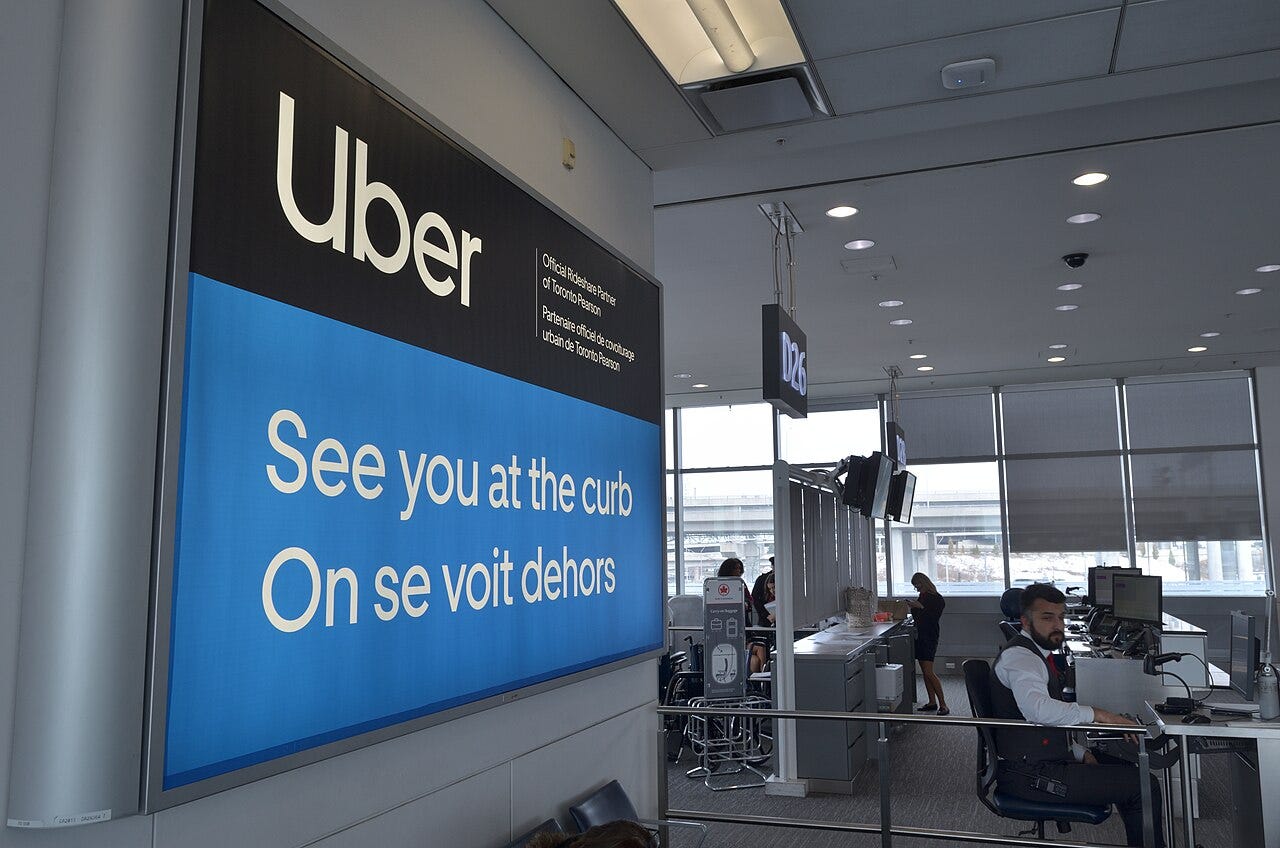Uber’s Long Road to Profitability
The company relied on outpourings of speculative funding to maintain its operations. Now public, it has found a sustainable business model, but one that didn’t revolutionize transportation.
Launched in 2009 as a luxury chauffeuring app, San Francisco-based Uber today provides food delivery, freight transportation, and, most importantly, ridesharing services, with freelance drivers using their personal vehicles and smartphones to act as taxis for passengers, all arranged by Uber’s smartphone applications. In 2022, over 7.5 billion trips were made with Uber worldwide.1 With a market capitalization of over $125 billion as of December 2023, Uber is not just one of the most valuable publicly-traded U.S. software companies, but has also become consistently financially profitable after fifteen years and an estimated $32 billion in cumulative losses.2 In the second quarter of 2023, Uber became profitable according to generally accepted accounting principles (GAAP) for the first time, reporting net income of $394 million.3 The company has generated positive free cash flows since the second quarter of 2022 i.e. the profitability of its services ignoring Uber’s large and volatile portfolio of shares in other companies that it owns.


